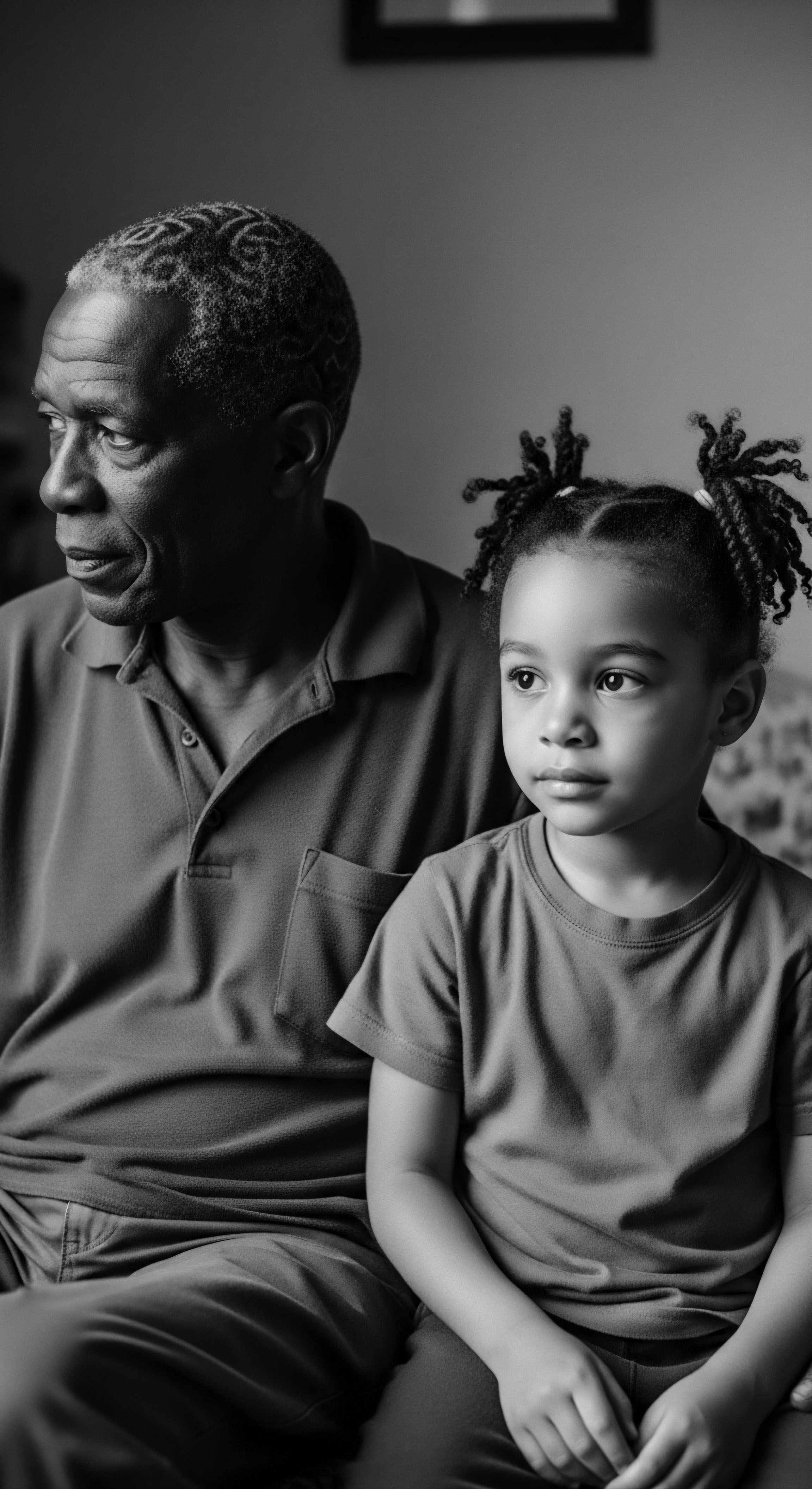
Fundamentals
Traditional Knowledge, in its foundational sense, encompasses the cumulative body of insights, practices, and beliefs transmitted across generations within communities. This expansive understanding includes deep-rooted perceptions about the natural world, social structures, spiritual realms, and the very fabric of daily existence. It is not a static collection of facts, but a dynamic, living system of understanding that continually adapts while retaining its core principles and heritage.
The delineation of Traditional Knowledge often extends to how communities interact with their environment, prepare sustenance, maintain wellness, and, crucially for Roothea’s living library, how they care for their hair. This ancestral wisdom is frequently expressed through oral traditions, rituals, practical skills, and communal customs, each contributing to a collective identity and a profound connection to the past.
For individuals with textured hair, particularly those within Black and mixed-race communities, Traditional Knowledge holds a particularly resonant meaning. It represents a lineage of ingenious care practices developed over millennia, often in response to unique hair structures and environmental conditions. These practices, passed down from elder to youth, were never merely about aesthetic appeal; they were deeply interwoven with cultural identity, spiritual beliefs, and communal bonds. The clarification of Traditional Knowledge here begins with acknowledging its origin in specific cultural contexts, recognizing that its substance is profoundly local and generational.
Traditional Knowledge represents a living archive of insights and practices, passed through generations, deeply connected to a community’s way of life and its textured hair heritage.
The earliest manifestations of Traditional Knowledge in textured hair care can be traced to pre-colonial African societies, where hair was revered as a sacred aspect of the self, a conduit to the divine, and a powerful symbol of one’s social standing. The explication of these initial practices reveals a sophisticated understanding of natural ingredients and styling techniques, long before the advent of modern cosmetic science.
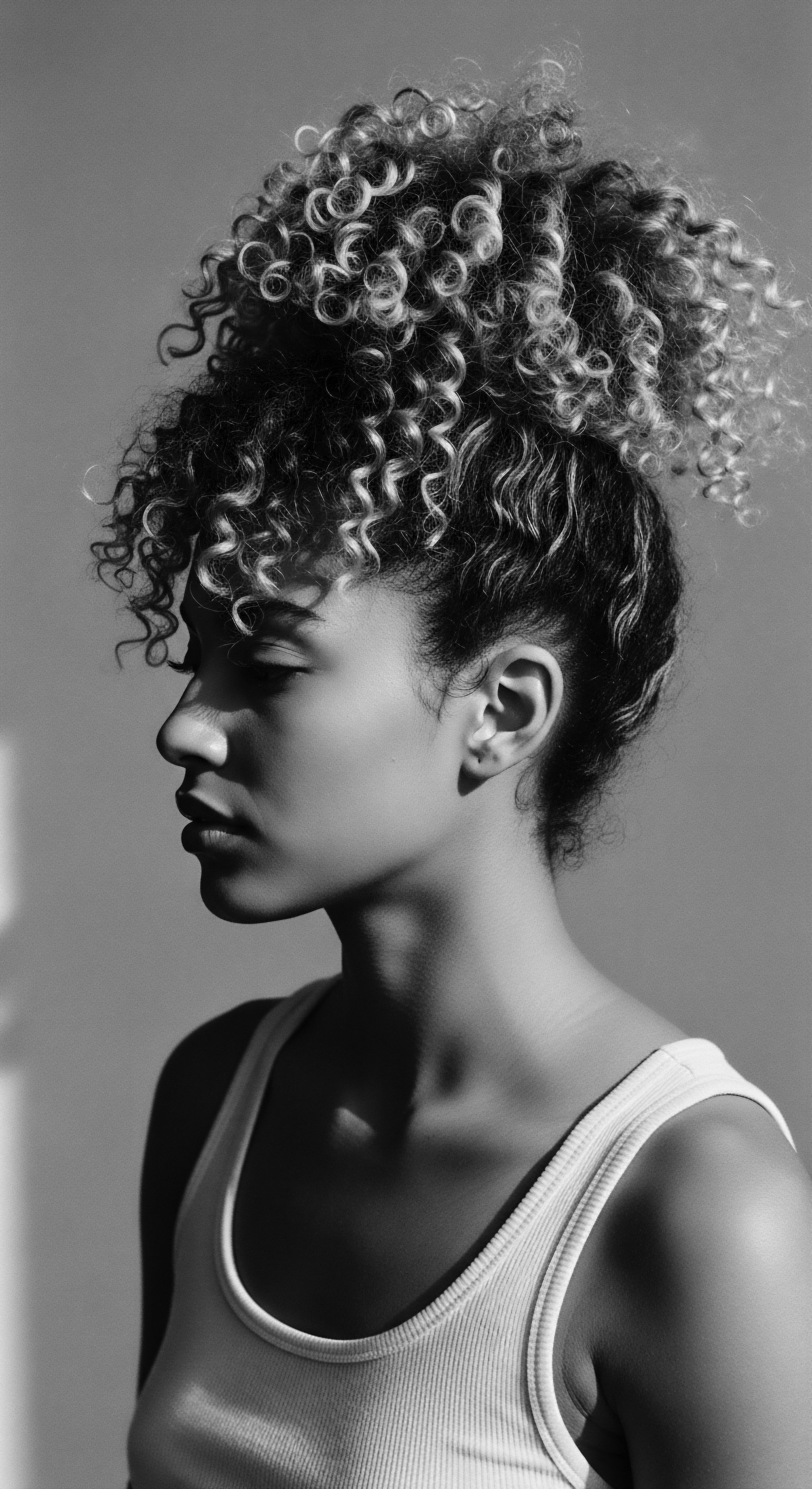
Ancient Hair Rituals and Early Understandings
In many ancient African civilizations, hair was regarded as the most elevated part of the human body, serving as a direct connection to spiritual energy and ancestral spirits. This perspective meant that hair care rituals were not casual endeavors but deliberate, often communal activities steeped in reverence. Early Traditional Knowledge about textured hair encompassed an intimate familiarity with indigenous plants and natural elements.
- Botanical Lore ❉ Communities gathered plants such as aloe vera, shea nuts, and various herbs, understanding their properties for cleansing, moisturizing, and strengthening hair. These botanical insights were empirically derived and refined over countless generations, forming a practical science of natural hair care.
- Communal Grooming ❉ Hair styling was often a social activity, a time for women to bond, share stories, and transmit knowledge. This communal aspect reinforced social cohesion and ensured the continuity of Traditional Knowledge through shared experience and mentorship.
- Styling Techniques ❉ Techniques like twisting, coiling, and braiding were developed not only for their beauty but also for their protective qualities, safeguarding hair from environmental factors and maintaining its health. These methods often varied significantly across different ethnic groups, reflecting distinct cultural identities.
The designation of hair as a marker of identity, status, and spiritual connection underscores the comprehensive nature of Traditional Knowledge. It was a holistic system where biological understanding, cultural values, and communal practices were inextricably linked. This early heritage lays the groundwork for appreciating the enduring value and continuing relevance of these ancestral insights in contemporary textured hair care.
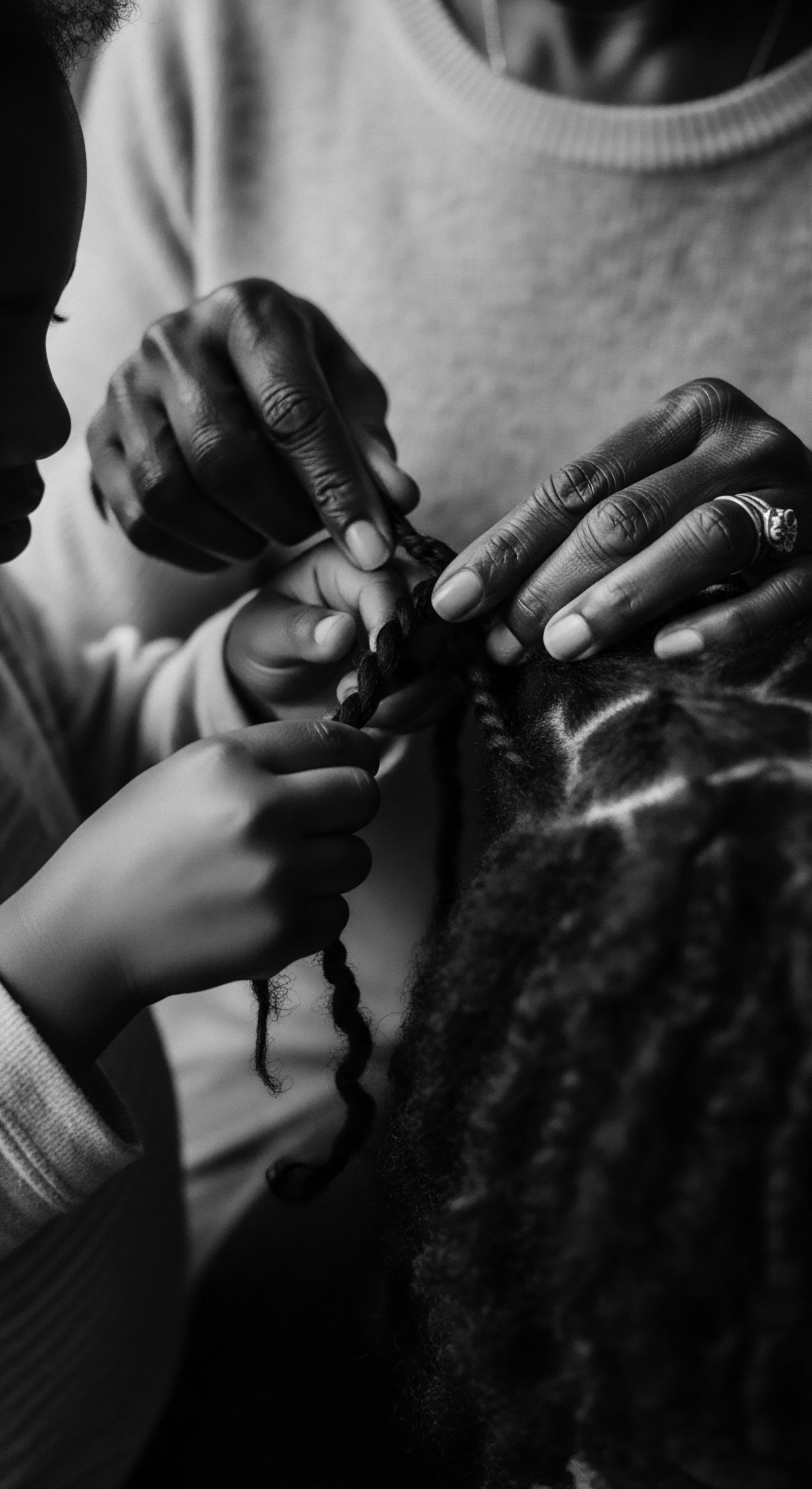
Intermediate
Moving beyond a fundamental apprehension, the intermediate meaning of Traditional Knowledge for textured hair involves a deeper consideration of its dynamic nature and its profound cultural and historical implications. It is not merely a collection of past practices, but a living tradition that has persisted, adapted, and sometimes resisted erasure through centuries of societal shifts. This level of understanding acknowledges the sophisticated interplay between ancestral practices and the evolving experiences of Black and mixed-race communities globally. The interpretation of Traditional Knowledge at this stage recognizes its role in shaping identity, building resilience, and maintaining cultural continuity amidst challenging circumstances.
The clarification of Traditional Knowledge at this juncture extends to its function as a repository of cultural memory. It is a tangible link to a heritage that has often been devalued or suppressed. Hair practices, steeped in ancestral wisdom, became subtle yet potent acts of affirmation, preserving a sense of self and community when external forces sought to dismantle it. This delineation shows how Traditional Knowledge is not merely preserved but actively recreated and reinterpreted by each generation, ensuring its continued vitality.
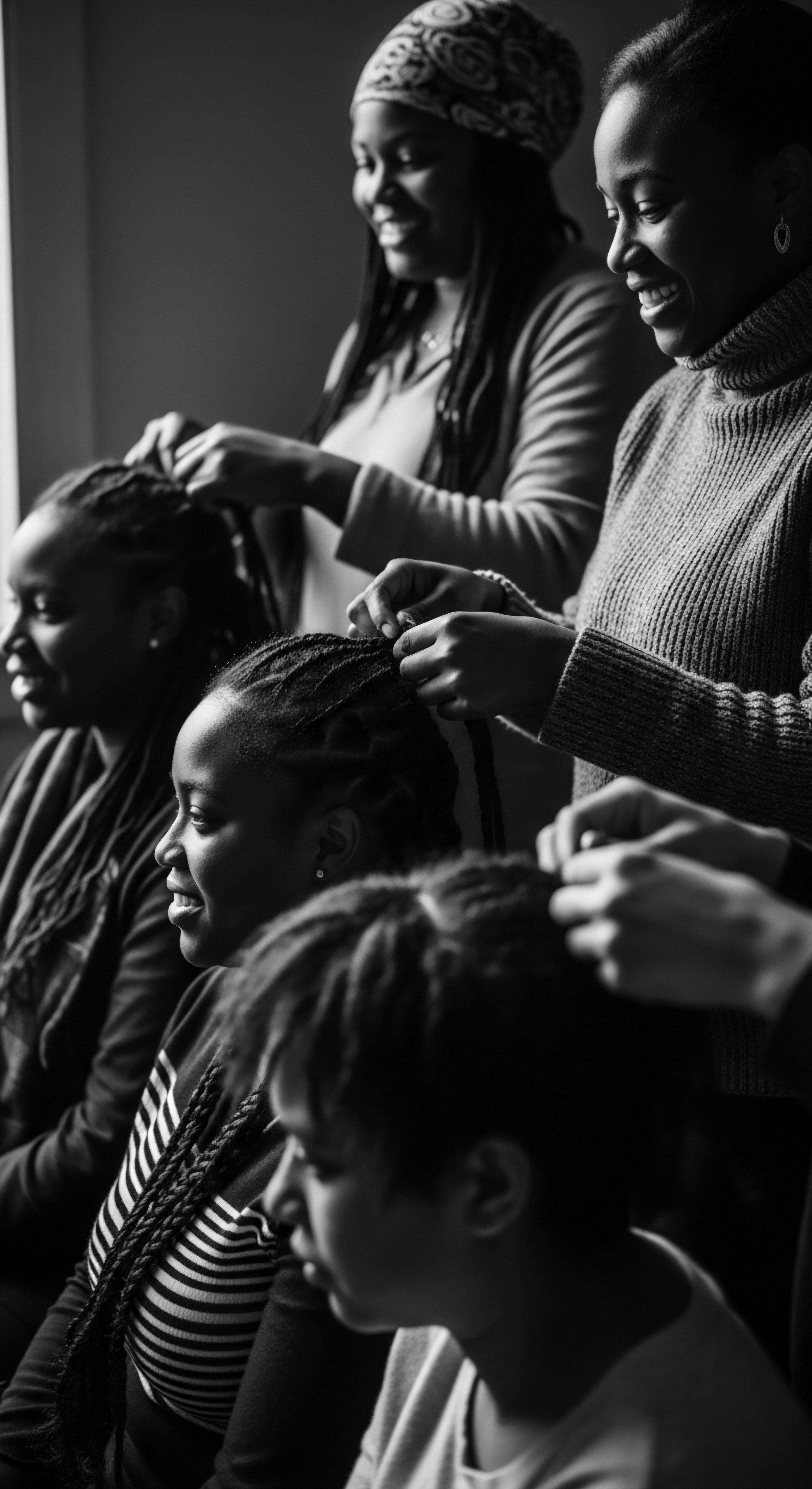
The Tender Thread ❉ Living Traditions of Care and Community
The practices that form Traditional Knowledge for textured hair have been transmitted through a tender thread of familial and communal exchange. This includes not only the methods of care but also the philosophies surrounding hair as a sacred extension of self. The practical application of Traditional Knowledge often involves the use of natural ingredients, many of which have been scientifically validated for their beneficial properties, even if their original selection was based on empirical observation and inherited wisdom.
Traditional Knowledge in textured hair care serves as a living repository of cultural memory, adapting through generations while retaining its profound connection to identity and resilience.
For instance, the widespread use of shea butter (derived from the nuts of the African shea tree, Vitellaria paradoxa) across West African communities for centuries speaks to a deep, inherited understanding of its moisturizing and protective qualities. Ethnobotanical studies have documented the use of numerous plants for hair and scalp care in various African ethnic groups. For example, the Gbaya ethnic group in Eastern Cameroon utilizes 36 wild plants for cosmetic and cosmeceutical purposes, including hair care, a testament to their comprehensive Traditional Knowledge of local flora (Fongnzossie et al.
2017). This systematic observation and application of natural resources form a crucial aspect of this enduring knowledge system.
The communal aspect of hair care also plays a significant role in the transmission of Traditional Knowledge. These gatherings, often informal, served as spaces for intergenerational learning, where techniques were demonstrated, stories shared, and cultural values instilled.
- Oral Transmission ❉ Recipes for hair oils, conditioners, and styling methods were passed down verbally, often accompanied by narratives explaining their cultural or spiritual significance. This oral heritage ensures the knowledge remains accessible and adaptable.
- Demonstration and Practice ❉ Younger generations learned by observing and participating in hair grooming sessions, developing the tactile skills necessary for intricate styling and careful handling of textured hair. This hands-on experience is vital for mastering the craft.
- Community Bonding ❉ These shared moments reinforced social ties and created a sense of collective identity. The act of styling hair became a ritual of connection, strengthening the communal fabric.
This level of understanding also encompasses the historical challenges faced by Traditional Knowledge. During periods of enslavement and colonization, deliberate attempts were made to strip individuals of their cultural identity, often beginning with the forced shaving of hair. Yet, even in these dire circumstances, Traditional Knowledge persisted, transforming into a subtle act of resistance and cultural preservation. The patterns of cornrows, for example, were sometimes used as clandestine maps for escape routes, or to conceal seeds for survival, demonstrating the extraordinary adaptability and profound practical application of this knowledge under duress.
| Aspect of Care Ingredients |
| Pre-Colonial African Practices Indigenous plant oils (e.g. shea butter, baobab oil), clays, herbs, natural dyes. |
| Adaptations in the Diaspora Utilized available local ingredients; adapted traditional methods to new flora; continued use of imported traditional ingredients when possible. |
| Aspect of Care Styling Methods |
| Pre-Colonial African Practices Diverse braiding, twisting, coiling, threading; styles conveying social status, age, tribal identity. |
| Adaptations in the Diaspora Preservation of traditional braiding/twisting patterns; development of new styles (e.g. Bantu knots, specific cornrow variations) as acts of resistance and identity markers. |
| Aspect of Care Social Context |
| Pre-Colonial African Practices Communal grooming rituals, intergenerational knowledge transfer, ceremonies. |
| Adaptations in the Diaspora Continued familial and community grooming sessions; creation of informal "hair salons" as social hubs; hair movements as collective acts of pride. |
| Aspect of Care This table highlights the resilience and adaptability of Traditional Knowledge, showing its continuous journey through historical shifts. |
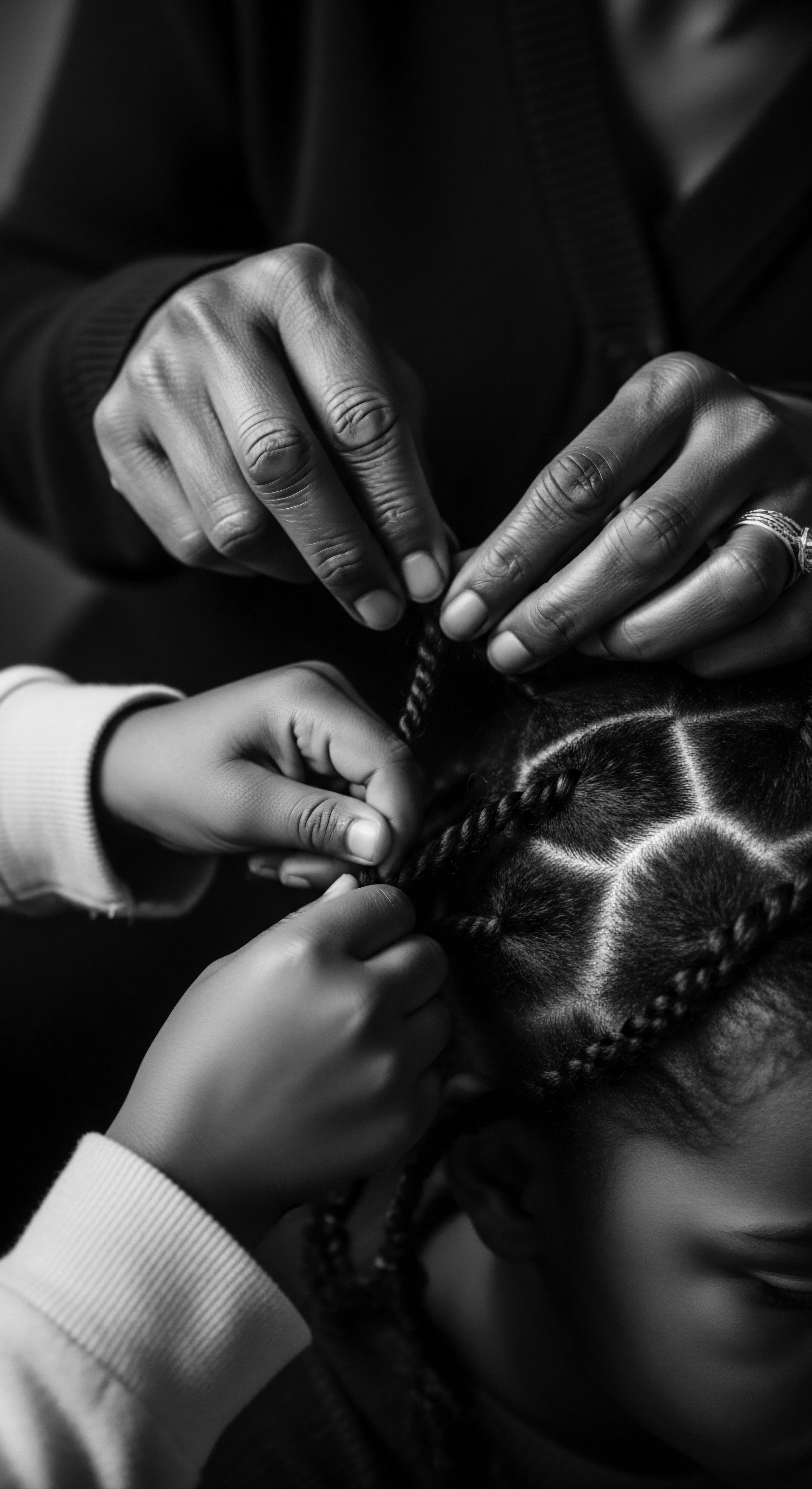
Academic
At an academic stratum, Traditional Knowledge is understood as a complex, dynamic, and often epistemologically distinct system of knowing, deeply embedded within the sociocultural and ecological contexts of Indigenous and local communities. It represents a cumulative, intergenerational accumulation of empirical observations, spiritual insights, and practical applications that often predate and sometimes run parallel to Western scientific paradigms. The rigorous definition of Traditional Knowledge at this level requires an examination of its systemic qualities, its inherent sovereignty, and its critical role in shaping the identity and survival of communities, particularly in relation to textured hair heritage. This elucidation moves beyond anecdotal evidence to explore the mechanisms of its transmission, its resilience against colonial suppression, and its contemporary resurgence as a vital, self-determined form of cultural property.
The meaning of Traditional Knowledge, when approached academically, is not merely about historical artifacts but about a living, evolving intellectual patrimony. It embodies a holistic worldview where the separation between the physical, spiritual, and social realms is often less rigid than in Western thought. For textured hair, this means understanding hair not just as a biological appendage, but as a deeply symbolic entity, a repository of ancestral memory, and a canvas for cultural expression. This conceptualization allows for a comprehensive exploration of its implications for Black and mixed-race hair experiences, where ancestral practices are not relics of the past but active components of present-day identity and wellbeing.

Echoes from the Source ❉ Elemental Biology and Ancient Practices
The deep understanding of textured hair, as manifested in Traditional Knowledge, often began with an intuitive grasp of its unique biological and structural properties. Ancient practitioners, through generations of careful observation, developed methods that addressed the specific needs of coily, kinky, and curly strands – their propensity for dryness, their strength, and their fragility. This observational science, though not articulated in modern chemical terms, led to practices that maintained hair health and promoted its natural growth.
Consider the intricate relationship between hair structure and traditional care. Textured hair, characterized by its elliptical cross-section and numerous twists and turns along the hair shaft, presents a unique challenge for natural sebum distribution, often leading to dryness. Traditional Knowledge countered this through the consistent application of rich, natural emollients and humectants derived from local flora.
For example, the use of various plant oils, such as those from the moringa tree (Moringa oleifera) or the marula tree (Sclerocarya birrea), was widespread across different African regions. These oils, rich in fatty acids and antioxidants, provided essential moisture and a protective barrier against harsh climates.
A powerful historical example that profoundly illuminates Traditional Knowledge’s connection to textured hair heritage, Black experiences, and ancestral practices is the strategic deployment of hair braiding by enslaved Africans in Colombia. During the 17th century, a leader named Benkos Biohó, who escaped slavery and established the first free village in the Americas, Palenque de San Basilio, devised an ingenious intelligence network. Enslaved women would create complex cornrow patterns on their scalps that served as clandestine maps, delineating escape routes, safe houses, and paths through the dense terrain to freedom. These seemingly decorative styles, often referred to as ‘departes’ (a hairstyle of thick braids tied into buns on top), carried precise, coded messages.
Some patterns mimicked roads or rivers, while others concealed gold nuggets or seeds, providing sustenance for the perilous journeys. This practice was not merely a survival tactic; it was a profound act of resistance and a testament to the adaptive genius of Traditional Knowledge, transforming a deeply personal aspect of identity into a tool for collective liberation. The historical accounts of this period underscore how hair, an integral part of African identity, became a covert medium for communication and an enduring symbol of defiance against dehumanization. (Byrd & Tharps, 2014)
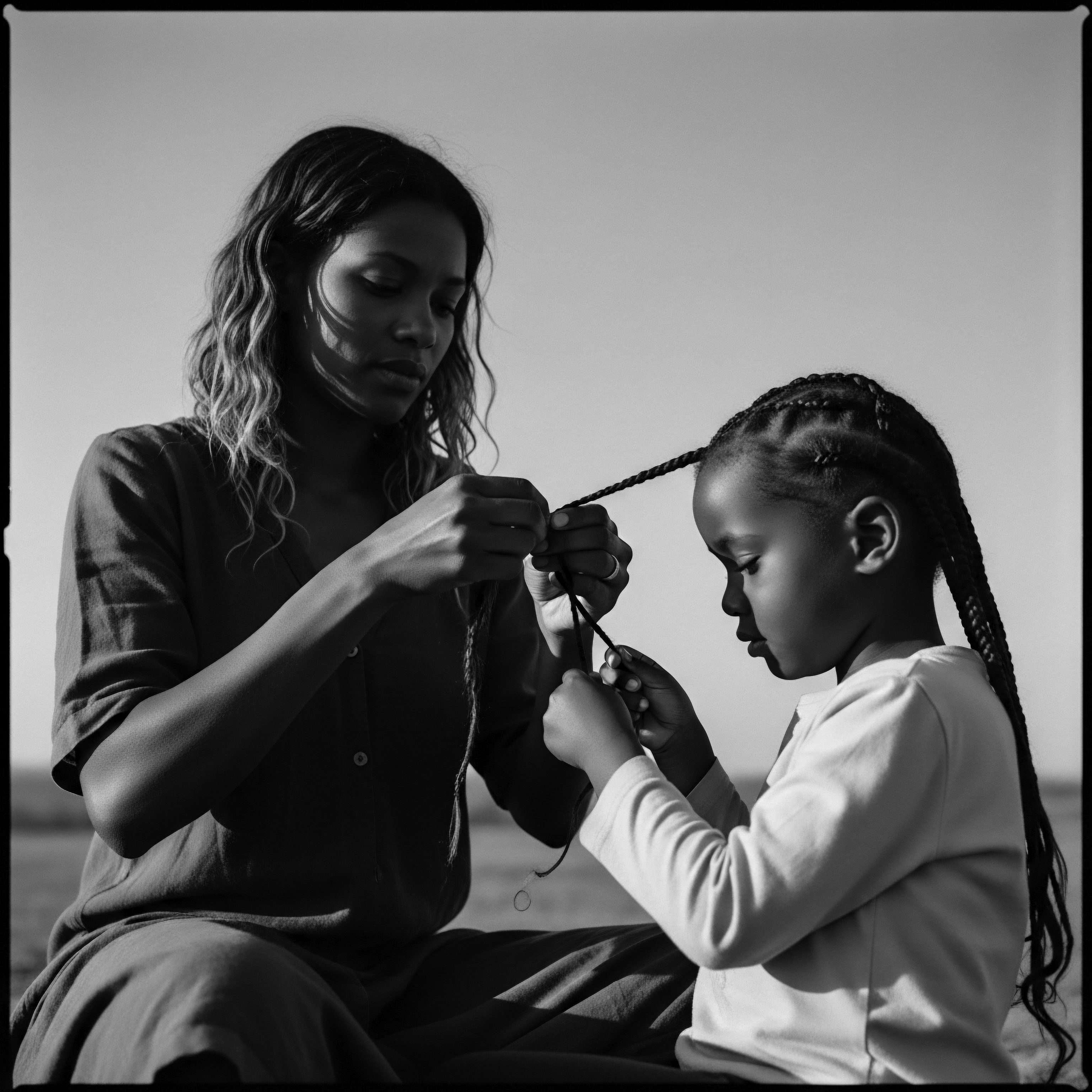
The Unbound Helix ❉ Voicing Identity and Shaping Futures
The historical subjugation of Black bodies, including the forced shaving of hair upon capture during the transatlantic slave trade, aimed to erase cultural identity and sever connections to ancestral lands. Yet, the resilience of Traditional Knowledge meant that hair continued to serve as a potent symbol of identity, even in the face of brutal oppression. The deliberate cultivation of hair, the intricate styles, and the continued use of traditional care practices became quiet yet powerful affirmations of selfhood and heritage. This enduring practice underscores the concept of hair as an ‘unbound helix,’ continually twisting and evolving yet always returning to its ancestral roots.
Traditional Knowledge transforms hair into an ‘unbound helix,’ a dynamic symbol of identity that resists erasure and continually reclaims ancestral connections.
The reclamation of natural textured hair in contemporary movements, such as the Natural Hair Movement, is a direct lineage from this Traditional Knowledge. It represents a conscious choice to honor ancestral practices and reject Eurocentric beauty standards that historically devalued coily and kinky hair. This modern expression of Traditional Knowledge is not a simple return to the past; rather, it is a sophisticated reinterpretation, blending ancient wisdom with contemporary scientific understanding and personal expression. The cultural significance of hair today, as seen in diverse Black and mixed-race communities, is a direct outcome of this historical continuity.
Academically, the study of Traditional Knowledge in textured hair also extends to its economic implications. The historical suppression of indigenous hair care industries and the subsequent dominance of mainstream, often chemically-laden products, highlight a complex legacy. The resurgence of Traditional Knowledge now fuels a vibrant market for natural hair products, often leveraging ingredients and methods passed down through generations. This economic dimension underscores the substance of Traditional Knowledge not only as cultural capital but also as a source of self-determination and economic empowerment within communities.
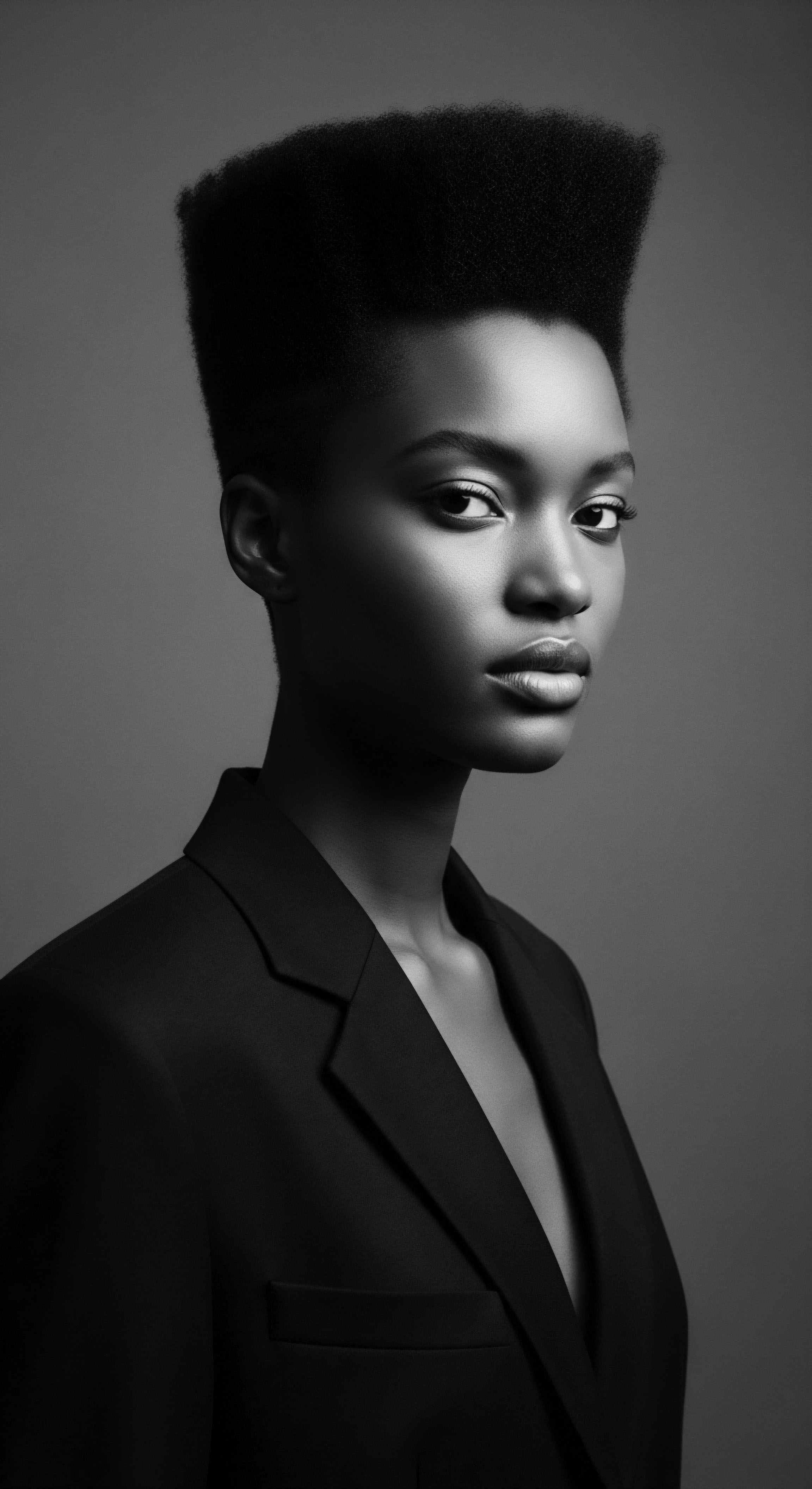
Interconnected Incidences and Diverse Perspectives
The academic investigation of Traditional Knowledge in textured hair requires a multi-disciplinary lens, drawing from anthropology, ethnobotany, sociology, and even material science. Each discipline offers a unique perspective on how this knowledge is generated, sustained, and its import for community wellbeing.
- Anthropological Studies ❉ These examine the cultural contexts of hair practices, their social meanings, and their role in rites of passage, identity formation, and communal solidarity. They document the rich variations of styles and their symbolic denotation across different African ethnic groups and diasporic communities.
- Ethnobotanical Research ❉ This field investigates the specific plant-based ingredients used in traditional hair care, analyzing their chemical properties and efficacy. It often validates the empirical observations of ancestral practitioners, demonstrating the scientific grounding of Traditional Knowledge. For instance, studies on African plants used for hair treatment and care often reveal their potential as antidiabetic agents when taken orally, pointing to a broader holistic health system (N’guessan et al. 2024).
- Sociological Analyses ❉ These explore the societal pressures and discrimination faced by individuals with textured hair, and how Traditional Knowledge, expressed through natural hair styles, becomes a form of resistance and a declaration of self-acceptance. The “pencil test” used in apartheid South Africa, which determined proximity to whiteness based on hair texture, serves as a stark reminder of how hair was weaponized for racial classification and social control (USC Dornsife, 2016). The rejection of such tests through embracing natural hair is a direct affirmation of Traditional Knowledge.
The comprehensive scope of Traditional Knowledge also encompasses the ethical considerations surrounding its appropriation and commercialization. The Local Contexts organization, for instance, has developed Traditional Knowledge (TK) Labels to allow Indigenous communities to express their inherent sovereignty over their cultural property and data, ensuring that their ancestral knowledge is used and shared according to their own protocols. This signifies a critical movement towards recognizing and respecting the intellectual property rights embedded within Traditional Knowledge, affirming its status as a valuable and protected asset. The continuous struggle for the recognition of textured hair in professional and educational settings further illustrates the ongoing contestation over the validity and acceptance of this deeply rooted cultural heritage.
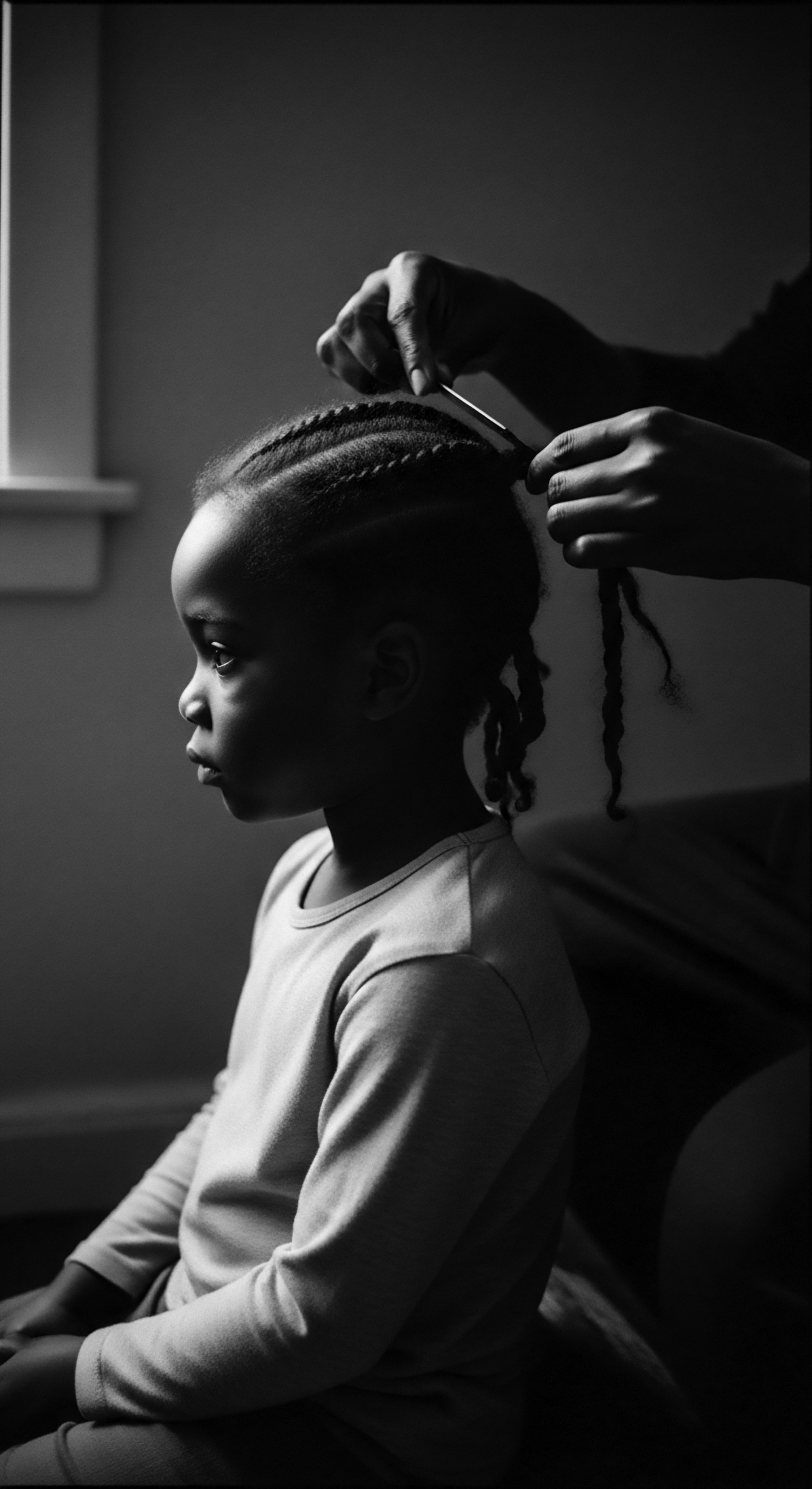
Reflection on the Heritage of Traditional Knowledge
The profound exploration of Traditional Knowledge, particularly as it pertains to textured hair, invites us to gaze upon a heritage that pulses with enduring life. It is a testament to human ingenuity, resilience, and an unwavering connection to ancestral ways. This knowledge, far from being a static relic, remains a vibrant, evolving force within Black and mixed-race communities, continually shaping expressions of self and communal identity. The very act of caring for textured hair with methods passed down through generations becomes a sacred ritual, a quiet conversation with those who came before.
The journey of Traditional Knowledge, from the elemental biology understood by ancient hands to the sophisticated scientific validations of today, mirrors the enduring spirit of the textured strand itself – a helix that bends and coils, yet never breaks its connection to its source. It speaks to a wisdom that recognizes the interconnectedness of body, spirit, and environment, a holistic approach to wellness that modern perspectives are only now beginning to fully comprehend. The whispers of ancient botanical lore, the communal rhythm of shared grooming, and the silent language of resistance braided into hair patterns all combine to form a profound cultural legacy.
As Roothea, a living library dedicated to this heritage, we stand in reverence of this boundless wisdom. The Traditional Knowledge of textured hair is not just a definition; it is a declaration of enduring beauty, a chronicle of perseverance, and a guiding light for future generations seeking to honor their ancestral stories through the care of their crown. It is a reminder that within every curl, every coil, and every wave resides a profound historical account, waiting to be acknowledged and celebrated.
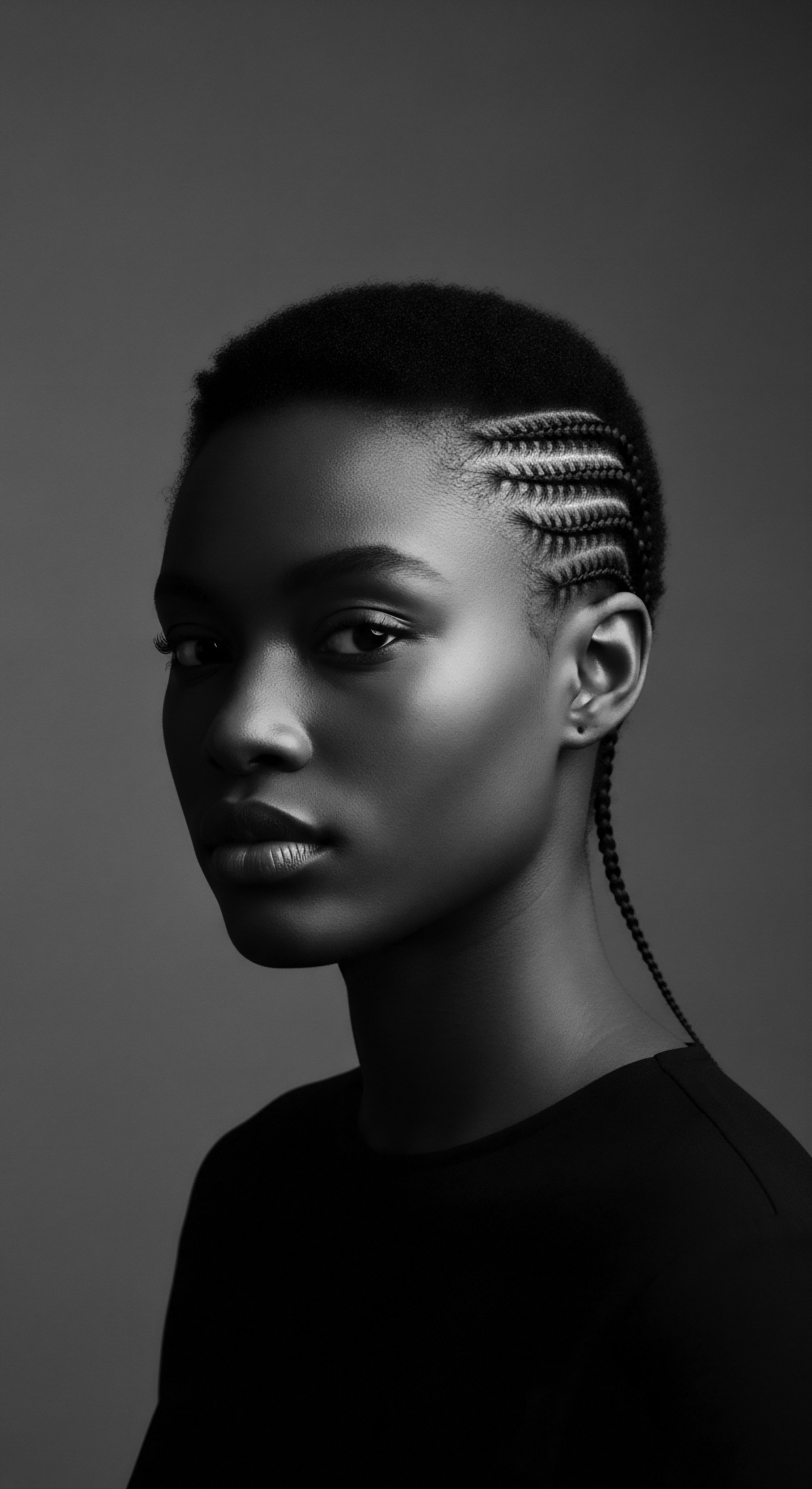
References
- Byrd, A. D. & Tharps, L. (2014). Hair Story ❉ Untangling the Roots of Black Hair in America. St. Martin’s Press.
- Fongnzossie, E. F. Tize, Z. Fogang Nde, P. J. Nyangono Biyegue, C. F. Bouelet Ntsama, I. S. Dibong, S. D. & Nkongmeneck, B. A. (2017). Ethnobotany and pharmacognostic perspective of plant species used as traditional cosmetics and cosmeceuticals among the Gbaya ethnic group in Eastern Cameroon. South African Journal of Botany, 112, 29-39.
- N’guessan, K. Ouattara, D. N’guessan, Y. S. Kouadio, J. C. & N’guessan, A. K. (2024). Cosmetopoeia of African Plants in Hair Treatment and Care ❉ Topical Nutrition and the Antidiabetic Connection?. Diversity, 16(2), 96.
- Sieber, R. & Herreman, F. (Eds.). (2000). Hair in African Art and Culture. Museum for African Art.
- USC Dornsife. (2016). Kinky, curly hair ❉ a tool of resistance across the African diaspora. The Conversation .
